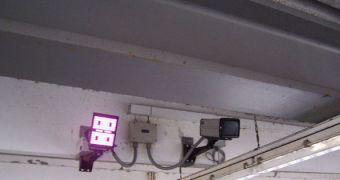According to officials at the giant defense contractor Lockheed Martin, it would appear that the company, working in collaboration with Animetrics Inc., has been awarded a new contract by the US government, this time for improving facial recognition software.
This type of tool is now used extensively by security companies, government agencies, the military and even private business, either for public security, or for improving perimeter defense.
But the technology still has severe drawbacks, especially in terms of accuracy and reliability. It will be the job of engineers at the two corporations to change all that, and turn this type of software around.
The ultimate goal here is to develop a technology that will allow those monitoring live video feeds to extract a two-dimensional, partial image of a face from a three-dimensional environment.
This will allow for example security forces to identify suspicious persons at airports a lot easier than ever before. At this point, most surveillance pictures that are taken by security cameras are only partial or side-views of the subject’s face.
Using the technology that Lockheed and Animetrics are to develop, experts will soon become able to use 3D modeling techniques to reconstruct a subject's entire face from only partial or distorted views.
The system will then cross-reference the resulting face with available databases of mugshots, in an attempt to establish a positive match and identification.
“Lockheed Martin’s experience in facial recognition software already deployed in today’s field, together with Animetrics' 3D modeling will greatly assist in our customer’s ability to solve facial identity cases,” explains Bob Eastman.
He is the vice president of the Information Systems division at Lockheed Martin. The official goes on to explain that the new system will be used a refining tool.
This means that human operators of security systems will use it to get a clearer picture of individuals that have already been pinpointed by automated facial recognition systems.
“This is an important step in advancing biometric and facial-recognition technology. In the future, we hope to develop technologies that will not only model existing pictures in 3D, but also collect images in 3D,” the expert adds.
Animetrics was selected for this project because of its 2D-to-3D patented technology, and also because it is a leading developer of cloud-based web service facial search and retrieval applications.

 14 DAY TRIAL //
14 DAY TRIAL //